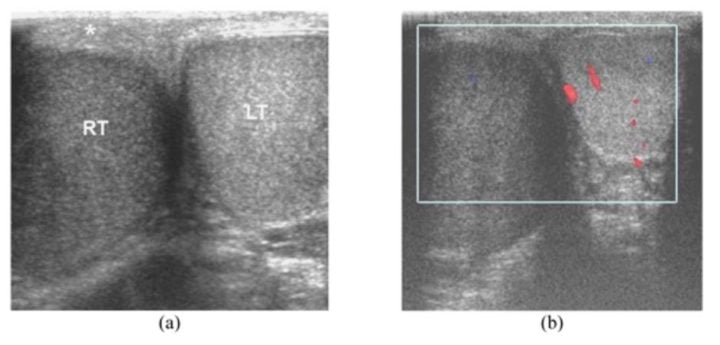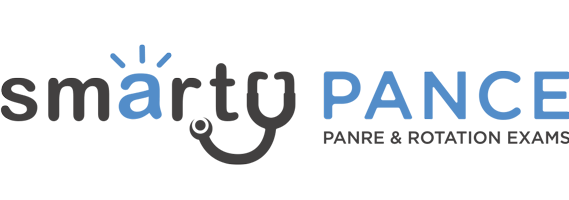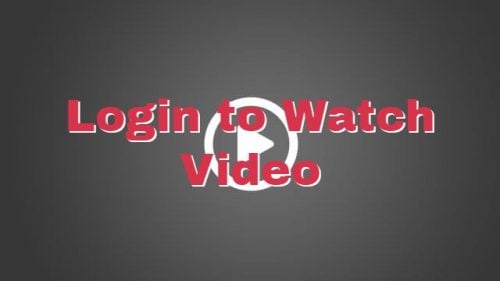Patient will present as → a 15-year-old boy with severe lower abdominal pain that awoke him from sleep about 3 hours ago. The pain is sharp and radiates to the right thigh. While in the emergency room, the patient experienced one episode of vomiting. He denies any fever, dysuria, or chills. The mom reports a childhood history of cryptorchidism. Physical examination reveals normal vitals with a blood pressure of 100/60 and a temperature of 98.6F. Abdominal examination is relatively benign. Scrotal examination reveals an elevated right testis that is diffusely tender. Lifting of the right testicle DOES NOT relieve pain, and there is a loss of a cremasteric reflex. The transillumination test is negative. Doppler ultrasound shows absent blood flow in the right testis.
To watch this and all of Joe Gilboy PA-C's video lessons you must be a member. Members can log in here or join now.
Twisting of the spermatic cord that results in compromised blood flow and ischemia - this is considered a surgical emergency
- Often after vigorous activity or minor trauma
- Usually in postpubertal boys: 65% occur in boys ages 10-20 years old
- Asymmetric high riding testicle “bell clapper deformity”
- Negative (-) Prehn's sign (lifting of testicle will NOT relieve pain in testicular torsion)
- Compare this to the (+) Prehn's sign = relief with elevation of the testicle, which is a classic sign of epididymitis
- Loss of cremasteric reflex (elevation of the testes in response to stroking of the inner thigh)
"The cremasteric reflex is elicited by stroking or pinching the medial thigh, causing contraction of the cremaster muscle, which elevates the testis. The cremasteric reflex is considered positive if the testicle moves at least 0.5 cm"
- Blue dot sign: Tender nodule 2 to 3 mm in diameter on the upper pole of the testicle - is indicative of the torsion of a testicular appendage, which is a vestigial remnant present in 80% of people designated male at birth
- More common in patients with a history of cryptorchidism
Testicular Doppler for diagnosis = best initial test
- Radionuclide scan demonstrates decreased uptake in the affected testes = gold standard

Acute testicular torsion in a 23-year-old man who presented with sudden right scrotal pain for 1 hour:a: Transverse ultrasound shows enlarged, hypoechoic right testis (RT) with thickened scrotal skin (asterisk). b: Color Doppler ultrasound shows no vascularity in the right testis. Image: 'Acute testicular torsion' by Thinyu S, Muttarak M. License: CC BY 2.5
Orchiopexy
- This is a surgical emergency - 6-hour time frame for repair with the best outcomes
- Emergent surgical intervention on the affected testis must be followed by elective surgery on the contralateral testes, which is also at risk for torsion.
Testicular torsion occurs when the spermatic cord twists, cutting off the testicle’s blood supply, leading to ischemia. The principal symptom is a rapid onset of testicular pain. The most common underlying cause in adolescents and neonates is a congenital malformation known as a “bell-clapper deformity” wherein the testis is inadequately affixed to the scrotum allowing it to move freely on its axis and susceptible to induced twisting of the cord and its vessels. Testicular malignancy is the most common etiology in adults. Diagnosis is clinical, with surgical detorsion urgently performed to prevent necrosis of the testicle and possible subfertility.
Play Video + QuizQuestion 1 |
Elevation of the scrotum and ice therapy | |
Ultrasound evaluation with Doppler color flow | |
Continued observation | |
Computed tomography (CT) scan of the pelvis | |
Doppler stethoscope evaluation |
Question 2 |
True | |
False |
Question 3 |
oral doxycycline Hint: Oral doxycycline is the treatment of choice for epididymitis. While epididymitis and testicular torsion present similarly, the Doppler ultrasound in epididymitis would show increased blood flow, not decreased. | |
emergent surgery | |
incision and drainage Hint: Incision and drainage is indicated for treatment of abscesses, not testicular torsion.Incision and drainage is indicated for treatment of abscesses, not testicular torsion. | |
scrotal elevation and ice packs Hint: Scrotal elevation and ice packs are indicated for adjunct treatment of epididymitis, not testicular torsion. |
Question 4 |
Nodular mass within the testis Hint: Testicular cancer is characterized by a painless nodular enlargement of the testis typically discovered by the patient. | |
High-lying testis | |
Transilluminated fluid mass Hint: A hydrocele is a collection of fluid within the scrotum which can be transilluminated on exam. | |
Palpation of a soft bag of worms Hint: A varicocele refers to varicose veins of the spermatic cord. It feels like a soft bag of worms in the scrotum separate from the testis. |
|
List |
References: Merck Manual · UpToDate


 Lecture
Lecture



